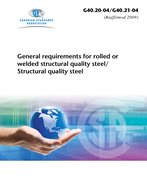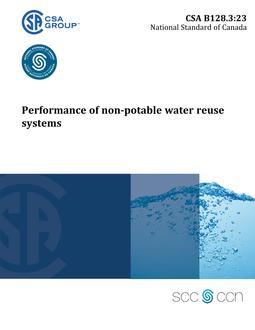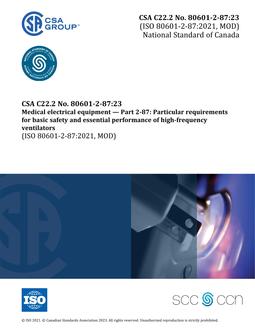
CSA G40.20-04/G40.21-04 (R2009)
Click here to purchase
This is a text searchable PDF
G40.20-04 General requirements for rolled or welded structural quality steel
1 Scope
1.1 This Standard outlines the requirements that apply, unless otherwise specified in a purchase order or individual standard, to structural quality steel plates, shapes, sheet, sheet piling, cold-formed channels, hollow sections, Z sections, and bars conforming to the requirements of CSA G40.21.Tables 11(a) to (h) of CSA G40.21 provide information on the dimensions and mass (weight) per unit length of structural shapes and sections commonly used in the construction of steel buildings and bridges.
1.2 In CSA Standards, shall is used to express a requirement, i.e., a provision that the user is obliged to satisfy in order to comply with the standard; should is used to express a recommendation or that which is advised but not required; and “may” is used to express an option or that which is permissible within the limits of the standard.
Notes accompanying clauses do not include requirements or alternative requirements; the purpose of a note accompanying a clause is to separate from the text explanatory or informative material. Notes to tables and figures are considered part of the table or figure and may be written as requirements. Legends to equations and figures are considered requirements.
1.3 The values stated in either SI (metric) or yard/pound units are to be regarded as standard. Within the text, the yard/pound units are shown in parentheses. The values stated in each system are not exact equivalents; each system must be used independently. Combining values from the two systems can result in nonconformance with this Standard.
G40.21-04 Structural quality steel
1 Scope
1.1 This Standard covers structural quality steel plates, shapes, hollow sections, sheet, sheet piling, cold-formed channels, Z sections, and bars for general construction and engineering purposes.
1.2 A number of strength levels are available under this Standard and are designated by the minimum yield strength in MPa (ksi). The common grades, types, and strength levels are shown in Table 1. Charpy V-notch categories are shown in Table 9. The purchaser specifies the grade and, if applicable, the category.
1.3 The following types of steel are covered by this Standard:
(a) Type W – Weldable Steel Steels of this type meet specified strength requirements and are suitable for general welded construction where notch toughness at low temperatures is not a design requirement. Applications include buildings, compression members of bridges, etc.
(b) Type WT – Weldable Notch-Tough Steel Steels of this type meet specified strength and Charpy V-notch impact requirements and are suitable for welded construction where notch toughness at low temperature is a design requirement. The purchaser, in addition to specifying the grade, specifies the required category of steel that establishes the Charpy V-notch test temperature and energy level. Applications include primary tension members in bridges and similar elements.
(c) Type R – Atmospheric Corrosion-Resistant Steel Steels of this type meet specified strength requirements. The atmospheric corrosion resistance of these steels in most environments is substantially better than that of carbon structural steels with or without a copper addition.* These steels are welded readily up to the maximum thickness covered by this Standard. Applications include unpainted siding, unpainted light structural members, etc., where notch toughness at low temperature is not a design requirement. *For methods of estimating the atmospheric corrosion resistance of low-alloy steels, see Clause 7.6. When properly exposed to the atmosphere, these steels can be used bare (unpainted) for many applications.
(d) Type A – Atmospheric Corrosion-Resistant Weldable Steel Steels of this type meet specified strength requirements. The atmospheric corrosion resistance of these steels in most environments is substantially better than that of carbon structural steels with or without a copper addition.* These steels are suitable for welded construction where notch toughness at low temperature is not a design requirement. Applications include those similar to Type W steel. *For methods of estimating the atmospheric corrosion resistance of low-alloy steels, see Clause 7.6. When properly exposed to the atmosphere, these steels can be used bare (unpainted) for many applications.
(e) Type AT – Atmospheric Corrosion-Resistant Weldable Notch-Tough Steel Steels of this type meet specified strength and Charpy V-notch impact requirements. The atmospheric corrosion resistance of these steels in most environments is substantially better than that of carbon structural steels with or without a copper addition.* These steels are suitable for welded construction where notch toughness at low temperature is a design requirement. The purchaser, in addition to specifying the grade, specifies the required category of steel that establishes the Charpy V-notch test temperature and energy level. Applications include primary tension members in bridges and similar elements. *For methods of estimating the atmospheric corrosion resistance of low-alloy steels, see Clause 7.6. When properly exposed to the atmosphere, these steels can be used bare (unpainted) for many applications.
(f) Type Q – Quenched and Tempered Low-Alloy Steel Plate Steels of this type meet specified strength requirements. While these steels are weldable, the welding and fabrication techniques are of fundamental importance to the properties of the plate, especially the heat-affected zone. Applications include bridges and similar structures.\
(g) Type QT – Quenched and Tempered Low-Alloy Notch-Tough Steel Plate Steels of this type meet specified strength and Charpy V-notch impact requirements. They provide good resistance to brittle fracture and are suitable for structures where notch toughness at low temperature is a design requirement. The purchaser, in addition to specifying the grade, specifies the required category of steel that establishes the Charpy V-notch test temperature and energy level. While these steels are weldable, the welding and fabrication techniques are of fundamental importance to the properties of the plate, especially the heat-affected zone. Applications include primary tension members in bridges and similar elements.
1.4 In CSA Standards, “shall” is used to express a requirement, i.e., a provision that the user is obliged to satisfy in order to comply with the standard; “should” is used to express a recommendation or that which is advised but not required; and “may” is used to express an option or that which is permissible within the limits of the standard. Notes accompanying clauses do not include requirements or alternative requirements; the purpose of a note accompanying a clause is to separate from the text explanatory or informative material.
Notes to tables and figures are considered part of the table or figure and may be written as requirements. Legends to equations and figures are considered requirements.
1.5 The values stated in either SI (metric) or yard/pound units are to be regarded as standard. Within the text, the yard/pound units are shown in parentheses. The values stated in each system are not exact equivalents; each system must be used independently. Combining values from the two systems can result in nonconformance with this Standard.
Product Details
- Published:
- 02/01/2004
- Number of Pages:
- 110
- File Size:
- 1 file , 1.1 MB
- Product Code(s):
- 2416784, 2416784


